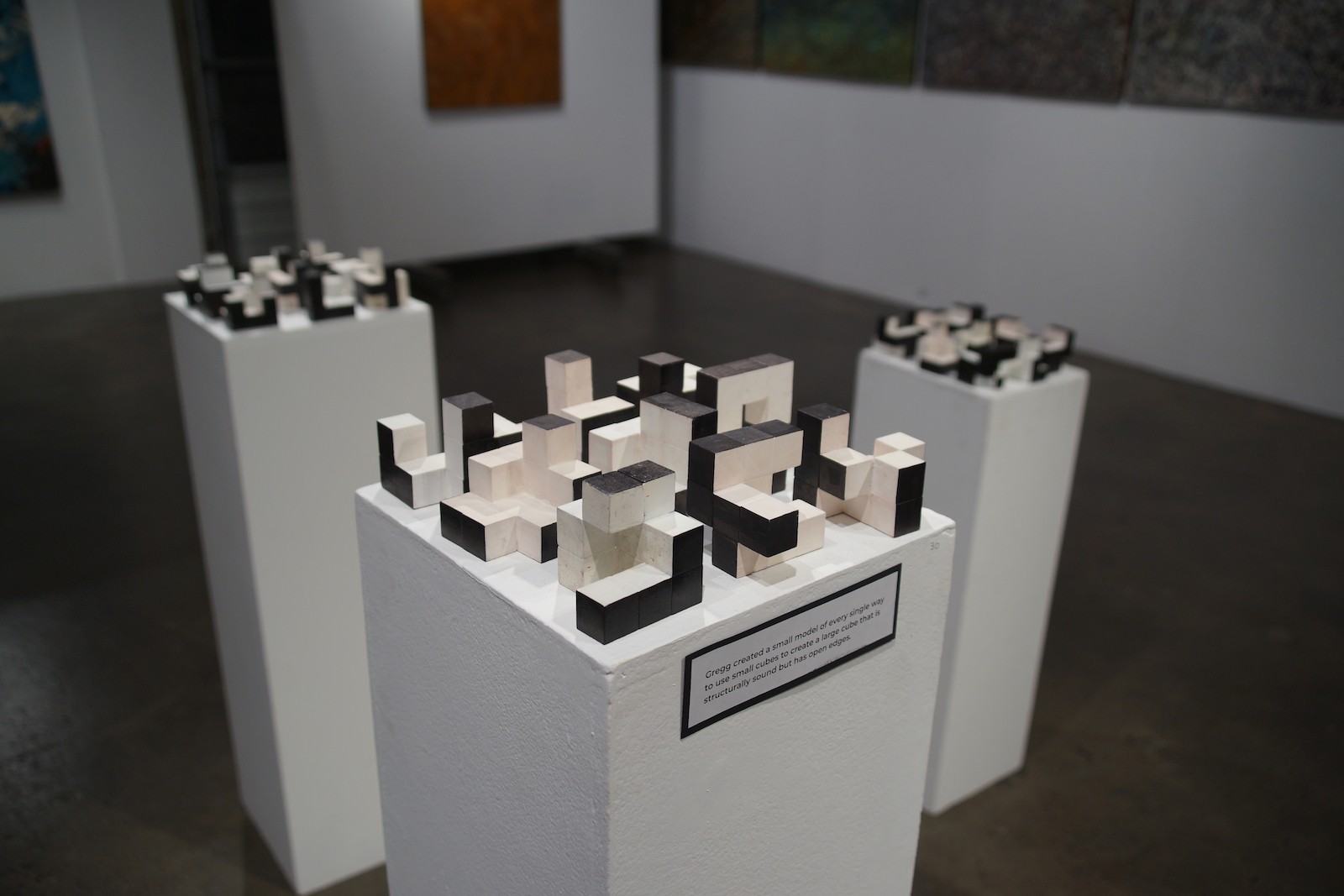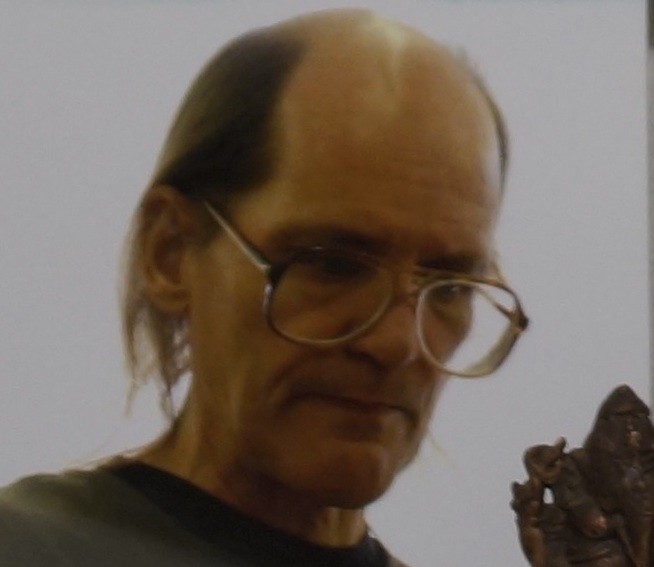
Knight Move Geometry
“Gregg Haller: Meditations on Mathematics – a Retrospective” features more than 100 works by the late artist, a longtime manager at Art Center on Union.
“It spans three decades of his artistic career,” says Luke Ramsey, 26, one of the curators of the show, which is on view through February 7th at Marshall Arts.
Haller had work in international showcases in Denver, Phoenix, and at Memphis Brooks Museum of Art. His work, Peanut Butter Dream, was performed in collaboration with Project Motion in 1992 at Brooks.
Numerous installations and pieces were shown at the Memphis Arts Festival (Arts in the Park) throughout the 1990s. In 1998, his piece, Cheap Shoes, was awarded Best in Show by Lowery Sims, former curator of 20th Century Art at the Metropolitan Museum of Art.
In 1995, Haller had several abstract paintings in the show, “Underscene,” at Marshall Arts.
Ramsey got to know Haller when they both worked at Art Center, where Ramsey was a sales clerk and Haller was manager from 1992 to 2018. They got to know each other through their “interest in using math in art.”
They also were interested in Buddhism. “He was a devout Buddhist and a devout mathematician.”
Ramsey described Haller as “very quiet. A pretty insular person ‘cause he was so absorbed in making these kinds of pieces and thinking of these kinds of things. He would spend a lot of time dwelling in his mind. He wasn’t curmudgeonly or anything. He was easy to talk to, but often he wasn’t the one to initiate the conversations.”
Haller had a studio in his apartment, but he also developed his ideas in sketchbooks at work. “He was always working on some sort of project or puzzle at work and then he’d take it home and it would morph into this larger piece.”
Almost all of Haller’s works are abstract. “He’d pick a mathematical concept or idea and let that generate the image. Some of them (the paintings and sculptures) are geometrical and some are organic, but almost all of them are process based. They grew out of an equation or a process that he determined without knowing what the image would look like.”
For example, Ramsey says, “He’d take a basic exponential equation and then he would graph that onto a torus – a grid wrapped in a donut shape. But then he would squash that torus into a two-dimensional shape and then he’d paint the resulting image.”
Haller “would do meticulous sketches beforehand and use those sketches as the basis for the final painting.”
A look through Haller’s notebooks and sketchbooks show “how deeply he thought of these before he created them. It was wild to see the thought process behind it.”
And, he says, “It’s just a really interesting mode of working. Most artists are so focused on the way it looks in the end. He was always more interested in the process of creating it. The meticulous detail in the sketch book and the finished pieces shows his commitment to the craft, his fascination with math, and the meditative act of making it.”
Describing Incomplete Cubes, Ramsey says, “He figured out every possible way you could make an incomplete cube out of smaller cubes. So, all of these cubes have at least one piece of each face of the cube. It’s every possible permutation you could use to create that.”
As Haller, who died of kidney failure at 62 last September, got sicker, Ramsey and Sully Allen “became his caretakers and helped him navigate the medical system. And talked to him about doing a show of his work over the years. He was very excited about it, but we didn’t have time to get it together. His health was declining.”
Also curating the show were Allen and others who knew Haller or worked with him at Art Center: Mia Saine, Zahria Cook, Cassie Wiegmann, and Amber Williams.
Most of Haller’s works “have never been shown before,” Ramsey says. “That’s why we thought it was so important to get it out there for people to see.”
They found more than 200 of Haller’s paintings in his apartment. “We are selling them to fund a mural of his work. We’re trying to find good homes and use that as a way to create a way for him to be permanently remembered.”
They’ve sold a third of the pieces in the show. “I’m hanging onto the ones that I was able to get a more thorough explanation of the content from him.”
Ramsey wants to find a museum that might be interested in Haller’s work. “That feels like the best way to honor his legacy.”
“Gregg Haller: Meditations on Mathematics – a Retrospective” is on view by appointment only ( ldramsey93@gmail.com) through February 7th at Marshall Arts, 639 Marshall Avenue.

Incomplete Cubes

Manifestations of the Unseen

Greg Haller
 Michael Donahue
Michael Donahue
Luke Ramsey